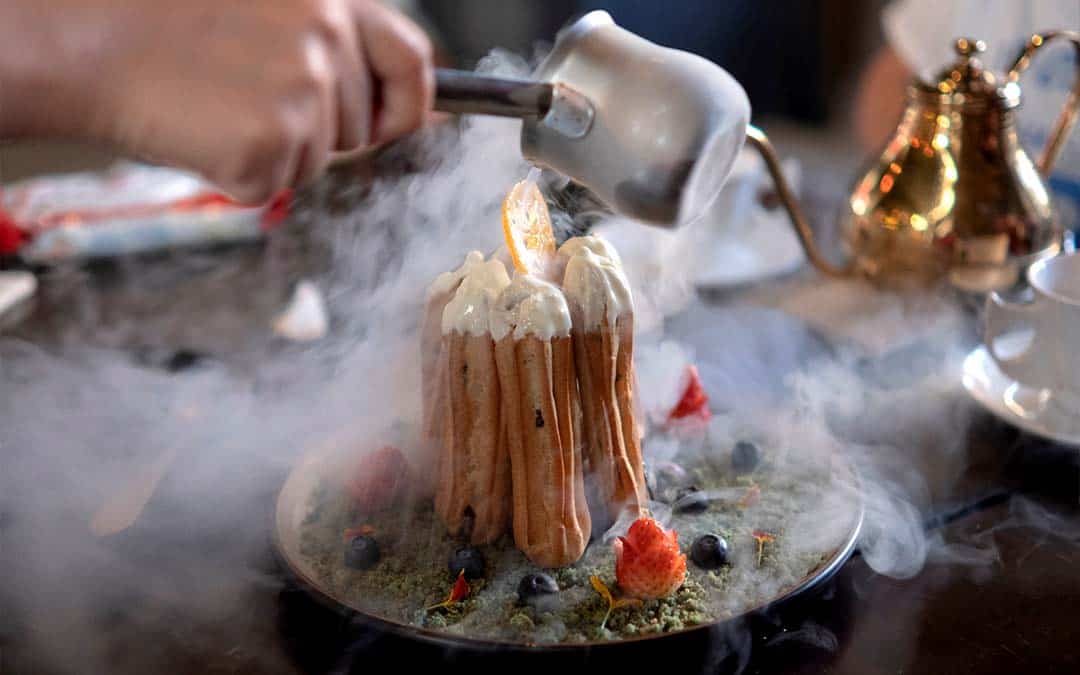If you’ve been considering using liquid nitrogen in your kitchen, you’re not alone. Liquid nitrogen has been all the craze in the culinary world lately, inspiring many home cooks to want to experiment with the versatile liquid gas. However, many are concerned about the potential health hazards at risk, particularly due to its potential toxicity and extreme freezing temperatures. Although some professionals insist that liquid nitrogen is no more dangerous than frying oil, proper training and specialized equipment must be utilized when trying this unique freezing technique.
Liquid Nitrogen in the Culinary Industry
Liquid nitrogen has been used in cooking since the 1800s, first seen used by culinary entrepreneur Agnes Marshall in her luxe ice cream concoctions. Finally trending much later in the 1990s, liquid nitrogen has found its way to chilly desserts and even savory meals involving flash-frozen meats, herbs, gels, etc.
At -321 degrees Fahrenheit, liquid nitrogen can quickly freeze ingredients to preserve its structural integrity, allowing for creamier ice creams, crunchy fruit, perfect hamburger patties, and delicate foie gras. Not only does this quick freezing time allow for better textures, but it also helps cut down on otherwise lengthy cooking processes.
And rest assured, liquid nitrogen creations are safe to eat as long as the liquid nitrogen has completely evaporated.
But is it safe to cook with liquid nitrogen?

Comparable to frying oil or hot sugar, any ingredient of extreme temperatures should be handled with utmost caution. Anyone handling liquid nitrogen in the kitchen should be properly trained, and should wear protective gear such as gloves and long garments in order to safeguard against potential splashes or accidental spills.
Not only this, but liquid nitrogen must be appropriately stored in vented and insulated containers. Liquid nitrogen can cause built up pressure due to expanding gas, so if stored incorrectly a potential burst or explosion can occur. Any leaks or improperly sealed containers can also lead to disaster involving accidental freezing or dangerous displacement of oxygen in non-ventilated spaces.
Although it may be tempting to start using liquid nitrogen at home, experts suggest holding off until one is properly trained and able to access specialized equipment to handle the liquid gas safely. It may be best to leave the concoction of these cool delicious treats to the professionals.
Are you a business interested in using or already specializing in liquid nitrogen? Our experts at CalOx have been providing businesses not only high-quality food-grade liquid nitrogen, but the necessary safety equipment needed to make frosty recipes since 1936. Offering services from regular deliveries and storage to training and maintenance, CalOx has the safety and success of your business in mind.
